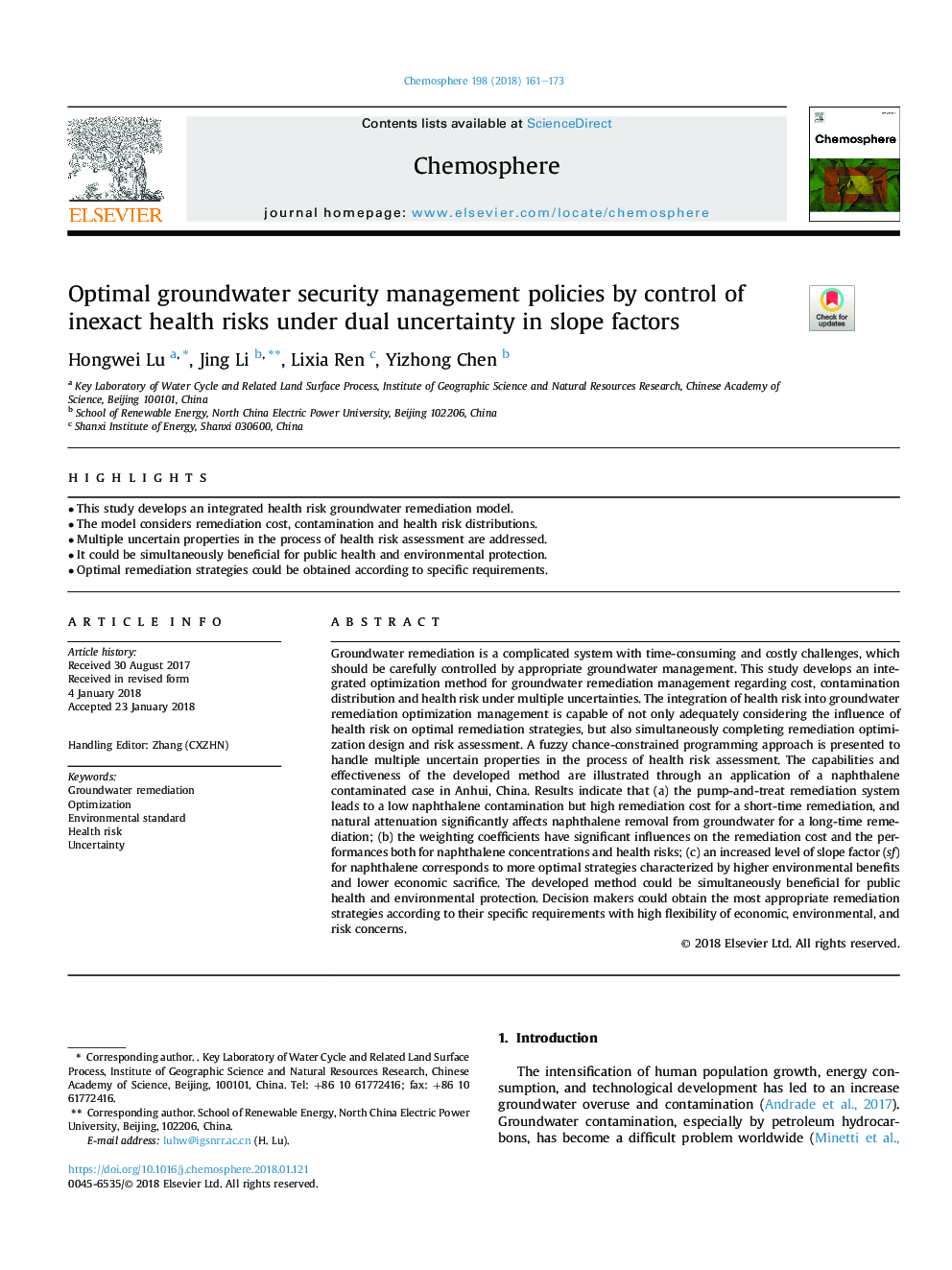| Article ID | Journal | Published Year | Pages | File Type |
|---|---|---|---|---|
| 8851928 | Chemosphere | 2018 | 13 Pages |
Abstract
Groundwater remediation is a complicated system with time-consuming and costly challenges, which should be carefully controlled by appropriate groundwater management. This study develops an integrated optimization method for groundwater remediation management regarding cost, contamination distribution and health risk under multiple uncertainties. The integration of health risk into groundwater remediation optimization management is capable of not only adequately considering the influence of health risk on optimal remediation strategies, but also simultaneously completing remediation optimization design and risk assessment. A fuzzy chance-constrained programming approach is presented to handle multiple uncertain properties in the process of health risk assessment. The capabilities and effectiveness of the developed method are illustrated through an application of a naphthalene contaminated case in Anhui, China. Results indicate that (a) the pump-and-treat remediation system leads to a low naphthalene contamination but high remediation cost for a short-time remediation, and natural attenuation significantly affects naphthalene removal from groundwater for a long-time remediation; (b) the weighting coefficients have significant influences on the remediation cost and the performances both for naphthalene concentrations and health risks; (c) an increased level of slope factor (sf) for naphthalene corresponds to more optimal strategies characterized by higher environmental benefits and lower economic sacrifice. The developed method could be simultaneously beneficial for public health and environmental protection. Decision makers could obtain the most appropriate remediation strategies according to their specific requirements with high flexibility of economic, environmental, and risk concerns.
Related Topics
Life Sciences
Environmental Science
Environmental Chemistry
Authors
Hongwei Lu, Jing Li, Lixia Ren, Yizhong Chen,
